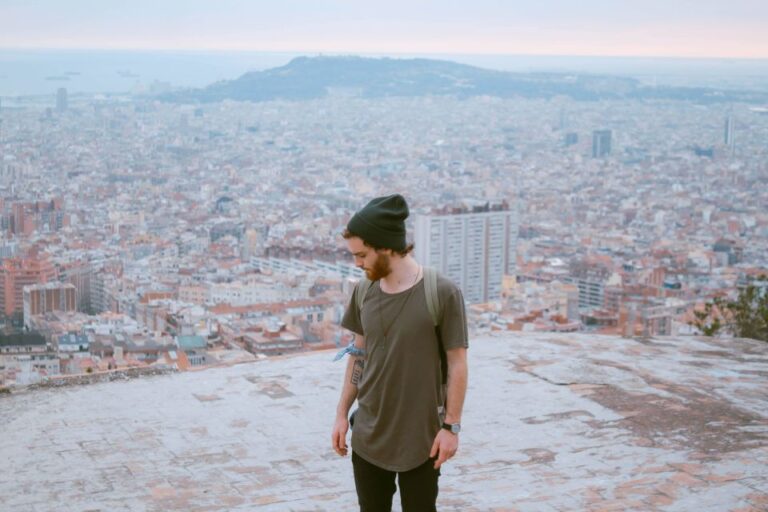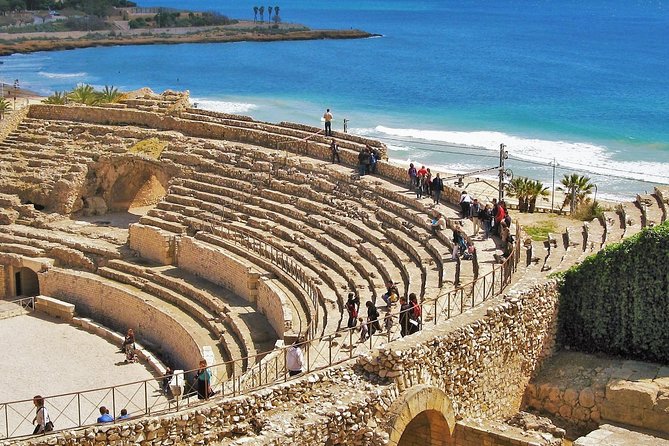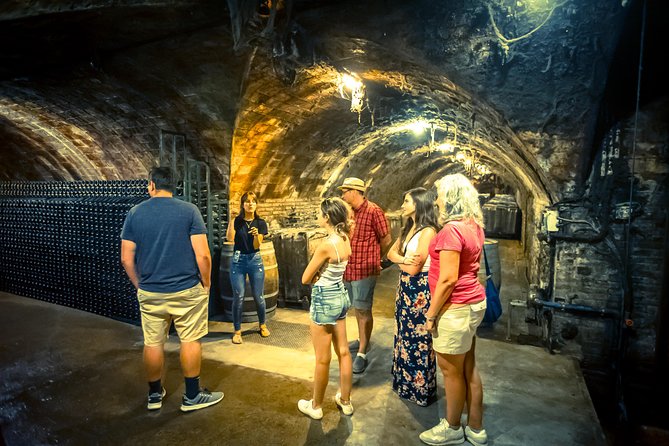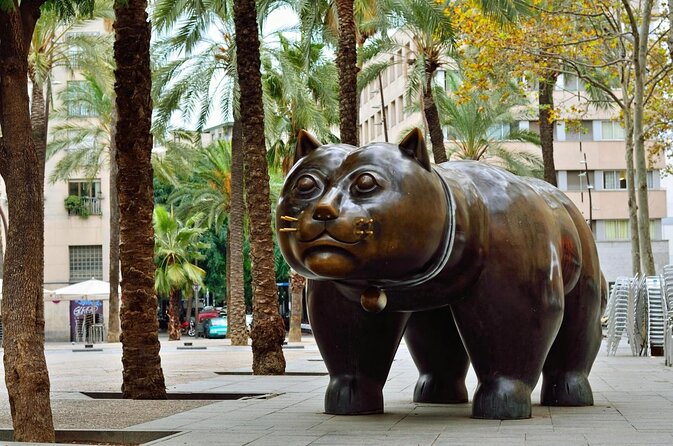Step back in time and explore the fascinating remains of Roman Barcelona, known as Barcino, at MUHBA Plaça del Rei. This ‘Museum of Barcelona History’, one of several within the MUHBA family, is located in the heart of the Gothic Quarter and takes visitors just over 16 feet below ground to experience the streets of the ancient city.
The ruins at MUHBA Plaça del Rei were discovered during city works to monumentalize the adjacent Plaça de Ramon Berenguer III in the 1930s. Since 1943, these archaeological treasures have been accessible to the public, offering a unique glimpse into Barcelona’s rich history.
A Subterranean Journey
As you navigate the underground maze, you’ll encounter maps and models of Roman Barcino, along with the remains of various structures that once formed the fabric of daily life in the ancient city.
City Walls and Towers
Marvel at the early city walls and towers, dating from 15-10 BC and the 4th century AD, which once protected the settlement from invaders.
Forum and Basilica
Discover the columns and decorative capitals that once adorned the impressive Roman Forum and Basilica, the center of public life in Barcino.
Frigidarium Foundations
Explore the foundations of the frigidarium, the cold water baths that formed part of the city’s public bathing complex.
Textile Workshop
Step into a 2nd-century A.D. textile laundering and dyeing workshop, complete with sinks used for various processes and the distinctive opus spicatum (herringbone-patterned pavement).
Garum Factory
Imagine the pungent aroma of a 3rd-century A.D. fish salting and garum (fish sauce) factory, an essential part of Roman cuisine.
Winery Remnants
Discover the remnants of a winery, including the crater-like dolias (vats) used for storing and aging wine.
Episcopal Complex
Venture into the 4th-century Episcopal complex, the site of the early Christian community, and explore:
- The narrow corridors and main entrance to the Episcopal Hall, a reception area used by the early bishops
- Remnants of wall frescoes, mosaics, and polychrome slate and marble pavement
- Foundations of a cross-shaped church and the remains of an altar, a reliquary (in the base of a pillar), and the baptistry
Above Ground: Exhibitions and Artifacts
After exploring the subterranean ruins, head above ground to the permanent and temporary exhibitions on the history of Barcelona. Here, you’ll encounter a wide array of fascinating artifacts that shed light on the city’s ancient past.
Funerary Monuments
Examine the intricate carvings on funerary monuments, such as those featuring reliefs of Medusa, the mythological figure known for her serpentine hair.
Imperial Busts
Come face-to-face with a bust of Empress Agripina Minor, dating back to the 1st century AD, and marvel at the skill of the ancient sculptors.
Divine Sculptures
Admire a 2nd-century A.D. sculpture of Diana, the goddess of the hunt, which once served as a table support, and a terracotta bust believed to depict Ceres, the goddess of agriculture.
Everyday Objects
Gain insight into the daily lives of the ancient Romans through objects such as:
- A bronze and coral brooch
- Amphorae and their lids
- Oil lamps decorated with scenes of gladiators and hunting
- A reproduction of a wax tablet, a stylus made of bone, and a personalized seal
- Jewelry crafted from glass, bronze, iron, and semi-precious stones, including a fish-shaped brooch and a reproduction ring seal
Architectural Wonders
The exhibition galleries are housed within various historic buildings, each with its own unique character and story.
Casa Padellàs
This 15th-century Gothic Renaissance palazzo was moved – stone by stone – from its original location on Carrer dels Mercaders to its current site at Plaça del Rei in the 1930s.
Palau Comtal (Palau Reial Major)
The 11th-century Palau Comtal, also known as Palau Reial Major, was once the residence of the Counts of Barcelona and later served as the Royal Palace of the kings of Aragon and Catalonia. The property includes:
- The 16th-century rectangular, five-story Torre Mirador del Rei Martí, or Watchtower of King Martin
- The 14th-century Saló del Tinell, the former Great Hall of the palace, which served as the Royal Court and seat of the Inquisition in the 16th century, and as a Benedictine monastery in the 18th century
Chapel of Santa Àgata
The 14th-century Chapel of Santa Àgata, a single-nave church situated to the right of the museum entrance, is partly constructed on the old Roman wall. The church, which can also be seen towering over the Plaça de Ramon Berenguer III, features polychrome wood decorations and the spectacular 15th-century Epiphany Altarpiece created by Jaume Huguet.
Plan Your Visit
- Location: MUHBA Plaça del Rei is located at Plaça del Rei in the heart of Barcelona’s Gothic Quarter.
- Ticket Info:
- Adult Admission (Ages 29-64): €7.00
- Adult Admission (Ages 16-28): €5.00
- Free on Sundays after 3:00 p.m. and all day on the first Sunday of the month
- Free admission for ages 15 & under and 65 & over
- Tickets are valid for entry to all MUHBA centers
- 50% discount with a Park Güell entrance ticket
More to Explore
Along With the Roman ruins and exhibitions at MUHBA Plaça del Rei, the museum offers a variety of other experiences and resources to help visitors delve deeper into Barcelona’s history.
Guided Tours
Join a guided tour led by knowledgeable experts who will share fascinating insights and stories about the ancient city and its inhabitants. These tours provide a more in-depth understanding of the ruins and artifacts on display.
Educational Programs
MUHBA Plaça del Rei offers a range of educational programs for visitors of all ages, including workshops, lectures, and interactive activities. These programs are designed to engage and inspire, making learning about Barcelona’s past a fun and memorable experience.
Research and Publications
The museum is also a hub for historical research, with a library and archive that houses an extensive collection of books, documents, and photographs related to Barcelona’s history. Visitors can access these resources to further their understanding of the city’s past and its place in the broader context of world history.
Tips for Your Visit
- Wear comfortable shoes, as the subterranean ruins involve walking on uneven surfaces and navigating narrow passageways.
- Take advantage of the audio guide or join a guided tour to gain a more comprehensive understanding of the ruins and artifacts on display.
- Allow at least 1-2 hours for your visit to fully appreciate the depth and breadth of the museum’s collections.
- Check the museum’s website for information on temporary exhibitions, special events, and educational programs that may be of interest.
- Combine your visit to MUHBA Plaça del Rei with other nearby attractions, such as the Barcelona Cathedral and the Plaça de Sant Jaume, to make the most of your time in the Gothic Quarter.
A visit to MUHBA Plaça del Rei is a must for anyone interested in uncovering the fascinating history of Barcelona. By exploring the ancient ruins and exhibits, you’ll gain a deeper appreciation for the city’s rich past and the enduring legacy of the Roman Empire. So step back in time and learn about the captivating world of Barcino – you won’t be disappointed.





